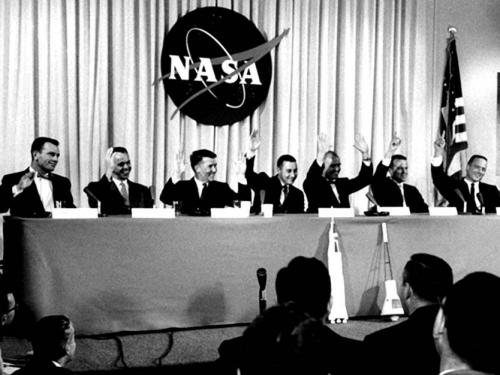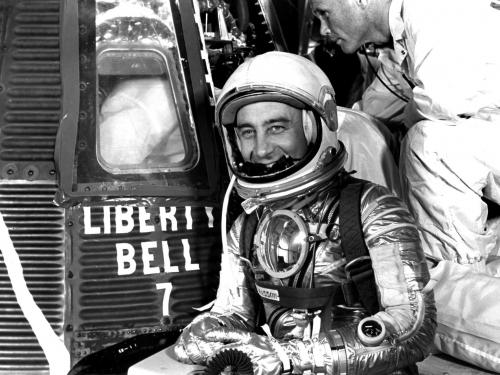

Stories of daring, stories of technological feats, stories of prevailing against the odds ... these are the stories we tell at the National Air and Space Museum. Dive in to the stories below to discover, learn, and be inspired.
Showing 1 - 10 of 33

September 23, 2024
The story of NASM's three-foot-tall doll wearing a scaled-down copy of the real Mercury spacesuit.

June 05, 2023
The touching story behind a 1960s charm bracelet.

September 22, 2022
Are you a lover of all things lunar? Here are three hidden gems from the Destination Moon exhibit you won’t want to miss.

September 22, 2022
In the late 1950s, he United States and the Soviet Union were locked in a competition for global influence and prestige—the Cold War—and began to compete on a new frontier: space. Both nations started programs to send humans into space. In the United States, that program was Project Mercury.

September 21, 2022
If you've heard the famous line "Houston, we've had a problem," you may be wondering: just who exactly is Houston?
May 05, 2022
To tell the story of the first American in space, the Museum has conserved and digitized the Mercury suit Alan Shepard wore during the first American human spaceflight in 1961. The suit will be displayed in the new Destination Moon exhibition.

February 20, 2022
When John Glenn splashed down at the end of his planned three-orbit mission, he became a national hero because he was the first American to orbit the Earth. Celebrate the 60th anniversary of Glenn’s historic spaceflight by learning about the origin of the seven-orbit myth.

December 29, 2021
As we ring in 2022, we celebrate the friends that make the National Air and Space Museum so special.

July 21, 2021
Space history curator Michael Neufeld tells the story of Gus Grissom's suborbital flight in July 1961 and the blown hatch that resulted in the sinking of his Mercury capsule.

May 05, 2021
On May 5, 1961, a Redstone rocket hurled Alan Shepard’s Mercury capsule, Freedom 7, 116 miles high and 302 miles downrange from Cape Canaveral, Florida. Freedom 7 parachuted into the Atlantic just 15 minutes and 22 seconds later, after attaining a maximum velocity of 5,180 mph. Shepard, a Navy test pilot and NASA astronaut, became the first American to fly in space.